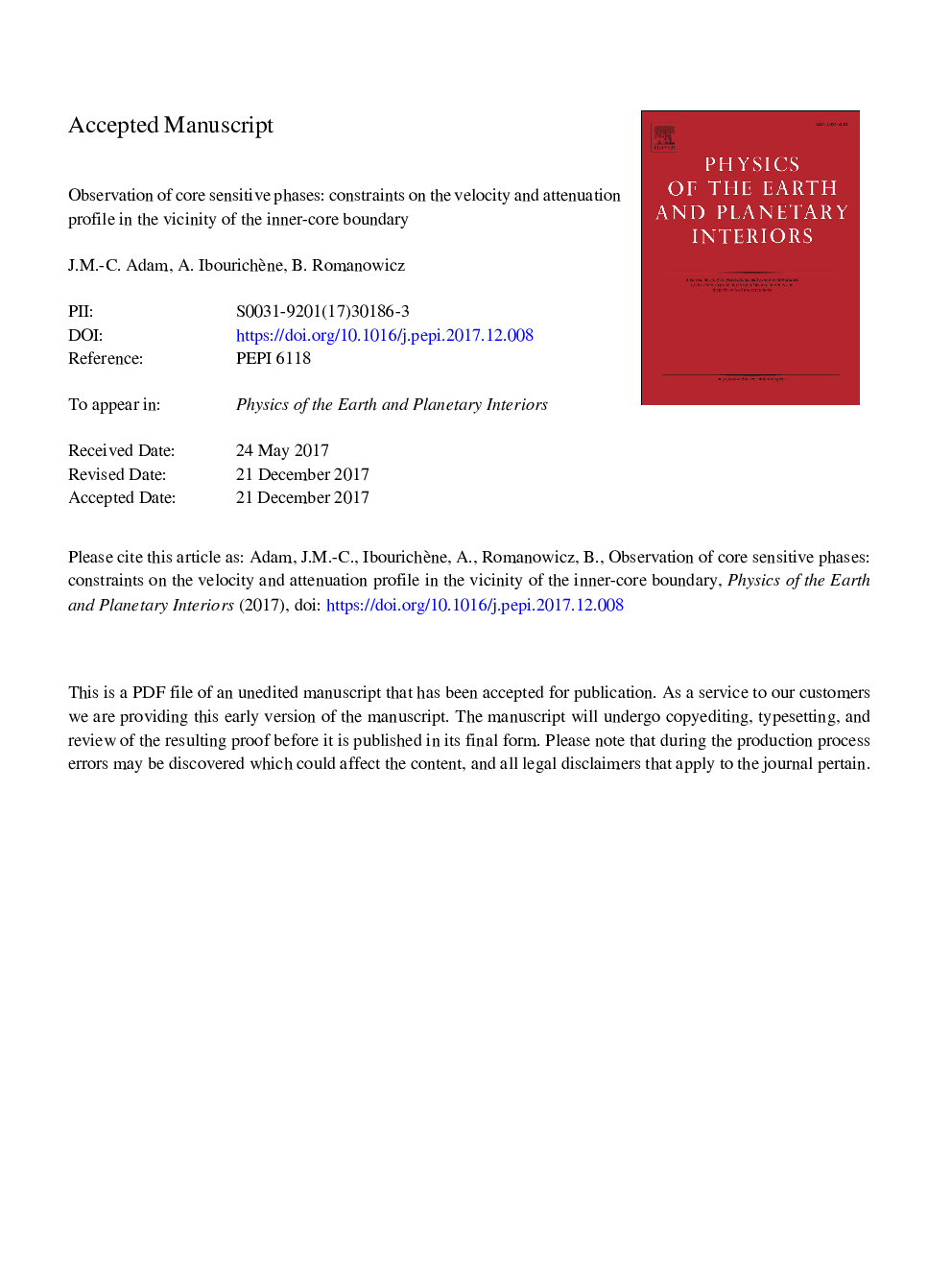| کد مقاله | کد نشریه | سال انتشار | مقاله انگلیسی | نسخه تمام متن |
|---|---|---|---|---|
| 8915742 | 1641465 | 2018 | 55 صفحه PDF | دانلود رایگان |
عنوان انگلیسی مقاله ISI
Observation of core sensitive phases: Constraints on the velocity and attenuation profile in the vicinity of the inner-core boundary
ترجمه فارسی عنوان
مشاهده فازهای حساس هسته: محدودیت های سرعت و ضریب خنثی در مجاورت مرز داخلی هسته
دانلود مقاله + سفارش ترجمه
دانلود مقاله ISI انگلیسی
رایگان برای ایرانیان
موضوعات مرتبط
مهندسی و علوم پایه
علوم زمین و سیارات
فیزیک زمین (ژئو فیزیک)
چکیده انگلیسی
We measured more than three thousand differential travel-times and amplitude ratios of PKPBC, PKPBC-diff, PKPAB and PKPDF phases in the epicentral distance range [149°-171°], from high quality records of globally distributed broadband stations. In particular, this is the largest collection of differential measurements of PKPBC-diff compared to PKPDF, extending by â¼10° the epicentral distance range in which the diffracted PKPBC phase has been observed globally. We used forward modelling of waveforms using the Direct Solution Method combined with a grid-search approach to explore attenuation and P-velocity structure in the vicinity of the inner core boundary (ICB) that can explain our observations. We find that, in order to simultaneously explain differential travel times and amplitude ratios of PKPBC, PKPBC-diff with respect to PKPDF out to distances of 165°, while fitting PKPAB/PKPDF within measurement errors, it is necessary to introduce a â¼450km zone of reduced bulk quality factor (Qκâ¼600) at the base of the outer core, while Qκ is close to 200 in a layer â¼150km thick at the top of the inner core. Concurrently, the P-velocity in the last 100â¯km of the outer-core is on average about 0.5% slower than in the reference model AK135, while it is about 0.5% faster in the top 150â¯km of the inner-core, resulting in a P-velocity jump at the inner core boundary slightly higher than in model AK135. However, this model underpredicts PKPBC-diff/PKPDF amplitude ratios at distances larger than 165°. Reducing Qκ even further in the last 100â¯km of the outer-core (down to Qκ = 50) provides a good fit to these data but it is not compatible with measurements of PKiKP/PKPDF amplitude ratios in the distance range 120-140°. We also considered a previously assembled global collection of “M phase” data. The M phase is a large energy in the coda of the PKPBC and PKPBC-diff that is not predicted by current 1D reference seismic models, but most likely originates at the base of the outer-core. Our preferred model predicts the presence of an M phase, but significantly underestimates its amplitude. In order to explain the large amplitude of the M-phase and that of PKPBC-diff at distances larger than 165° without significantly affecting PKiKP amplitudes, it seems necessary to invoke a process that would produce strong scattering for diffracted phases in the immediate vicinity of the ICB, on the outer core side. Clusters of solid particles suspended in the fluid core or topography of the ICB are possible candidates that should be explored further.
ناشر
Database: Elsevier - ScienceDirect (ساینس دایرکت)
Journal: Physics of the Earth and Planetary Interiors - Volume 275, February 2018, Pages 19-31
Journal: Physics of the Earth and Planetary Interiors - Volume 275, February 2018, Pages 19-31
نویسندگان
J.M.-C. Adam, A. Ibourichène, B. Romanowicz,
